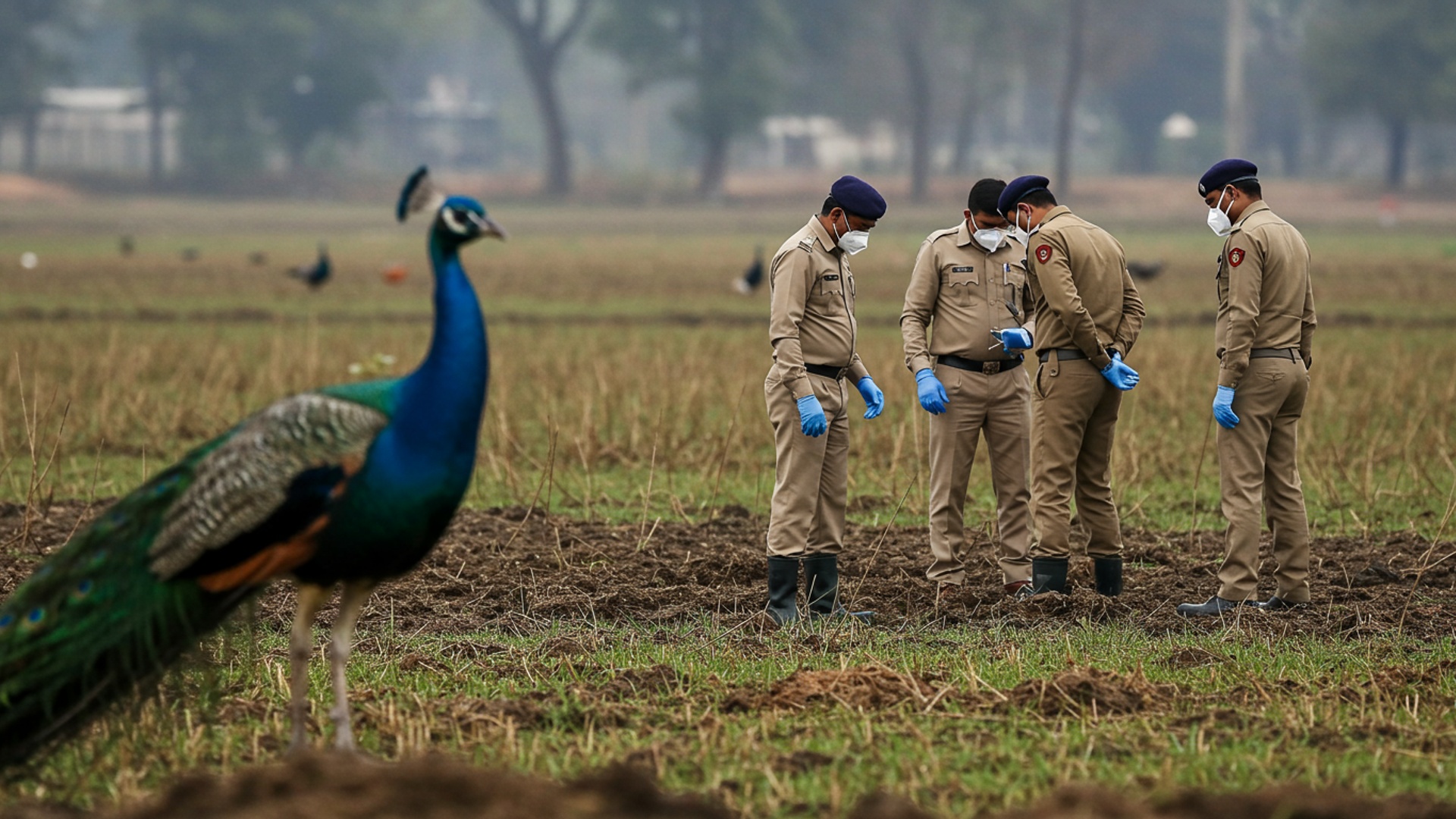A wave of alarm sweeps across Karnataka as numerous peacocks, India’s national bird, are found dead, their vibrant plumage dulled by an unseen threat. State wildlife officials confirm a devastating link: a commonly used fungicide is the prime suspect in these recent, tragic deaths. The grim discovery, made this week across several rural areas, points to a growing crisis where agricultural practices directly imperil protected wildlife. Investigations are now intensifying to trace the exact source of the poison and prevent further fatalities, raising urgent questions about farming chemical safety and its deadly impact on the environment.
Many Peacocks Found Dead
In a deeply concerning event, twenty peacocks, India’s national bird, were found dead near a farm in Hanumanthapura village. This village is located in the Midigeshi hobli of Madhugiri taluk, in Karnataka’s Tumakuru district, about 120 kilometers from Bengaluru. The bodies of three male and seventeen female peacocks were discovered by local farmers on August 3, 2025, scattered across agricultural land next to a stream. Villagers reported seeing the peacocks active just a day before, adding to the shock and mystery surrounding their sudden deaths. The first peacock carcass was spotted near the Kere Kodi waterfall, with others found in the surrounding fields within a 600-meter area.
Tests Show Fungicide Presence
Forensic tests have confirmed that the peacocks were poisoned, detecting traces of a deadly fungicide in their body samples. Toxicological analysis of internal samples taken from the dead birds revealed the presence of diphenyl metalaxyl. This chemical is a fungicide commonly used in both agriculture and horticulture. Senior forest officials from Tumakuru division stated that there were no outer injuries or wounds on the peacock bodies. all internal organs were whole. But, detailed examination confirmed the poison in their liver samples.
How the Birds Were Poisoned
The exact way the peacocks ingested the harmful chemical is still not fully clear. Officials are looking into whether the birds ate seeds that had been treated with the fungicide or if they drank water that became dirty when farmers cleaned pesticide containers near the water source. Farmers often treat seeds with fungicides before planting, especially during the kharif season, to protect them from insects and worms. The field where the peacocks were found dead was planted with maize. experts have been brought in to study samples of the maize seeds. This investigation aims to find out if the birds consumed these treated seeds.
Government Orders Full Investigation
Karnataka’s Forest, Ecology and Environment Minister, Eshwar Khandre, has ordered a thorough investigation into the deaths. The government is taking the incident very seriously. Minister Khandre instructed the Deputy Conservator of Forests to lead the inquiry and submit a detailed report within five days. He also emphasized the need for legal action based on what the investigation finds. Forest Department officials quickly went to the site after being alerted by villagers. They collected samples and sent the peacock bodies to Forensic Science Laboratories for testing to find the exact cause of death. A case has been registered under the Wildlife (Protection) Act of 1972. The probe will aim to determine if the poisoning was an accident or a deliberate act. Notices have been sent to agriculture and horticulture officials, farm owners. local panchayat representatives for questioning.
Pattern of Wildlife Deaths
This incident is not an isolated one. It is the third time in less than a month that wildlife poisoning has been reported in Karnataka, causing wide concern and criticism. Just weeks before, 20 monkeys were found dead in the Chamarajanagar district on July 2, 2025, with officials suspecting poisoning. Before that, in June 2025, a tigress and her four cubs died in the Male Mahadeshwara Hills Wildlife Sanctuary after eating a poisoned cow carcass. Investigations into the tiger deaths revealed that chemicals like carbofuran and phorate were found in the animals’ bodies. The minister expressed deep sadness over these repeated incidents, highlighting the loss of the national animal and now the national bird to poisoning. He has directed that all deaths of wildlife species listed under Schedule 1 or 2 of the Wildlife Protection Act must be audited immediately.
Growing Concerns Between Farmers and Wildlife
The peacock deaths have also brought back discussions about the quickly growing peacock population in Karnataka. A report from 2023, called the ‘State of India’s Birds,’ showed a 491% rise in peacock numbers across the state over the last 30 years. While peacocks are admired for their beauty and protected by law, their increasing numbers have led to problems for farmers. Peacocks often raid agricultural and horticultural fields, which causes damage to crops. This situation creates a difficult balance between protecting wildlife and protecting the livelihoods of farmers. Conservationists have also raised worries about possible water pollution or the use of illegal farming chemicals in nearby farmlands. The forest department has said that detailed investigations will be done. steps will be taken to stop similar incidents from happening again. There is also talk of starting awareness campaigns about safe farming practices and wildlife protection.
![]()


















